Paver Styles in Orange County, CA
Why Pavers?
Pavers are certainly beautiful, but are they worth the investment? Pavers offer a perfect way to enhance the look of your home but they also offer other benefits as well.
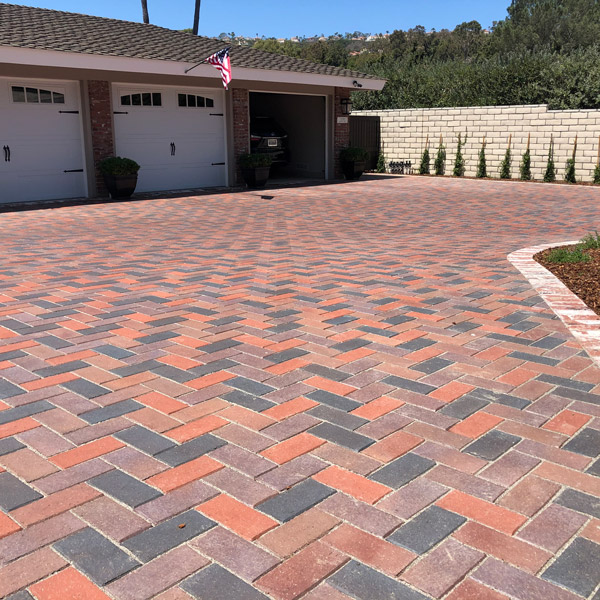
Tumbled Pavers
The tumbled “antique” version of Pavers brings a rustic European element to your home or commercial property. The Pavers give you an Old World look or a weathered look that you find in many European towns and older towns throughout the world. It’s typically a bit more expensive in price due to the fact that the manufacturing process is a bit more involved.
Today, your home can reflect this era of history with Tumbled pavers from Belgard, Orco or Ackerstone or Angelus Block. Rich earth tone colors and Blends with textured surfaces create an authentic “old world” appearance. Available in multiple sizes styles for pattern flexibility.
Modern style vs. old world, smooth vs. textured, beveled edge vs. weathered. Some architecture would look better with a more natural stone-like appearance, reflecting a desire for a classic sense of permanence and elegance.

Non-Tumbled Pavers
This type of Paver has a more modern contemporary look. This type of paver is most common on traditional track homes and or modern homes. This kind of paver is smooth on the surface and requires only regular joint sand. It has a “beveled edge” or “bread loaf” top and is less rustic in appearance.
This type of paver comes in more colors and more patterns since it is more popular for commercial and residential applications.
The Non tumbled paver retains much of the benefits of a typical tumbled paver. The installation is virtually the same. It is also more cost-effective or less expensive. The durability and strength remain the same as the tumbled paver. Overall, tumbled pavers cost a bit more and require a little more maintenance than non-tumbled Pavers. There are multiple shapes and sizes of both tumbled and non-tumbled products to meet a vast array of architectural themes.
Popular Patterns
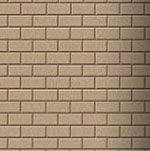
100% 6 x 9 or 4 x 8 Holland
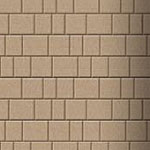
25% 7 x 12, 25% 9.5 x 12, 25% 12 x 12, 25% 12 x 14
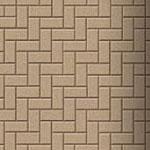
100% 6 x 9 or 4 x 8 Holland

60% 6 x 9 and 40% 6 x 6
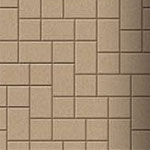
60% 6 x 9 and 40% 6 x 6
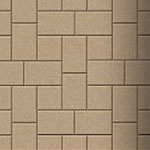
75% 6 x 9 and 25% 6 x 6
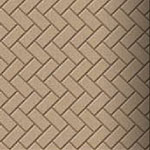
100% 6 x 9 or 4 x 8 Holland
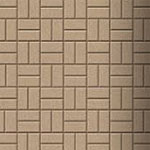
100% 4 x 8 Holland
Frequently Asked Questions
Tumbled vs. Non-Tumbled
An additional process of tumbling the paver is required in the manufacturing process. In the past pavers would be tumbled in a huge drum, similar to one you would see on a cement mixer truck. The pavers are slowly turned and tumbled inside the drum and restacked on a pallet ready for delivery. This process is time consuming and can add from $2.00 to $2.75 per square foot to the material costs once breakage loss is factored in.
A newer in-line tumbler has been added to many manufacturing plants recently. The second cost factor involves installation. A joint sand stabilizer must be used to protect the wider, irregular, tumbled joints. This can be done with polymeric sand, which has polymer binding agents that harden the sand lock it into the joints. Polymeric sand can add up to .80 cents per square foot to your project depending on the particular product selected.
The process is mostly the same. The paver underlayment and sub-base are prepared in the same fashion. It may take about 10 percent longer for a tumbled paver installation, for the polymeric sand installation.
With traditional un-tumbled pavers, the paver sand is “out of sight, out of mind” the joints are so small that the sand stays in place and requires very little maintenance. Only some cleaning and power washing is required every few years.
Typically we use polymeric sand, the joints and corners of the pavers are wider, making almost a grout-like appearance. The polymeric sand will slowly break down over the years and may need replacement.
Although most tumbled pavers are ADA compliant, be prepared for a rougher, slightly less uniform surface. Take into consideration anything that would be rolled across the paver surface form a wheelchair to a skateboard. Un-tumbled pavers are generally considered fine for Tennis or basketball, whereas, some tumbled pavers may affect the bounce.
Tumbled pavers blend harmoniously into most residential or commercial settings and complement the equally strong current trend toward natural surfaces in segmental retaining wall products. Although developed for use in standard concrete paver applications, there are some considerations to acknowledge when designing a project with tumbled pavers.
